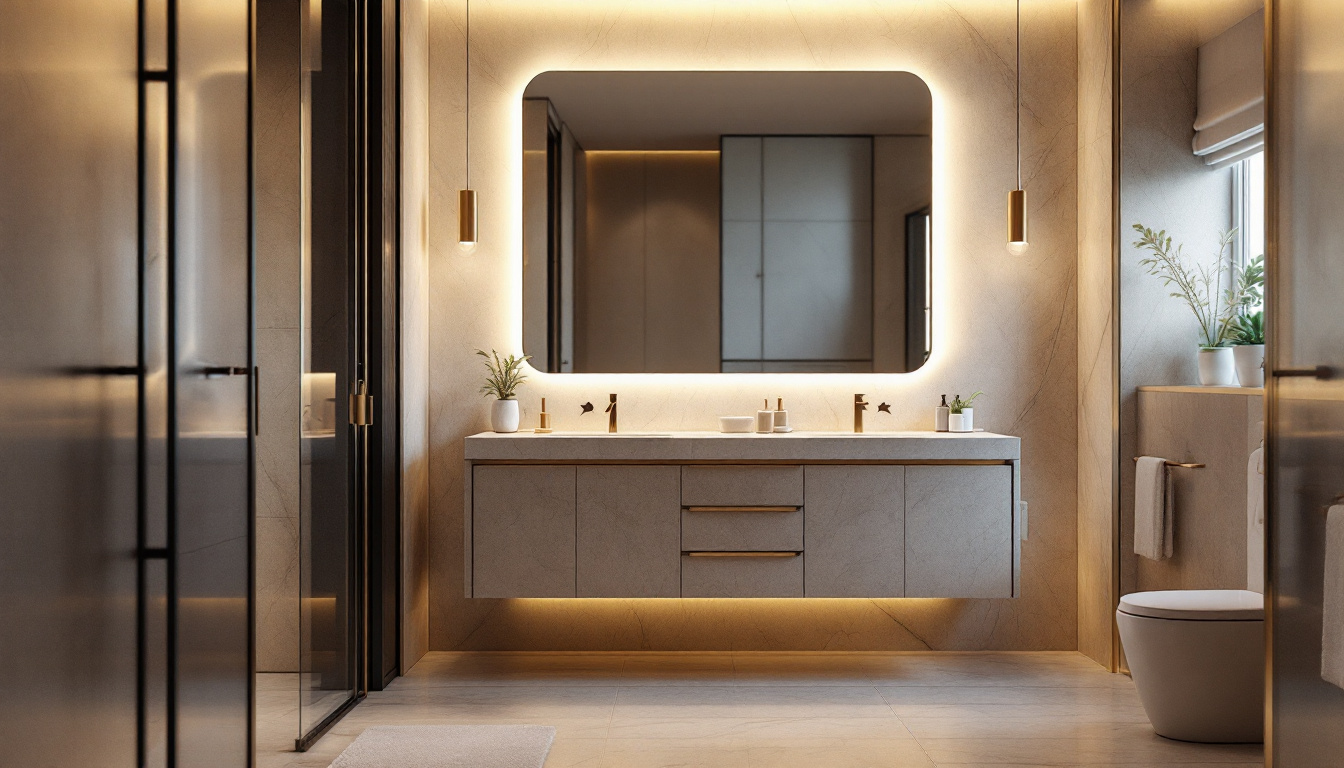

Lighting contractors play a crucial role in creating functional and aesthetically pleasing environments. One of the most popular choices in commercial spaces is hanging lights, which can enhance the ambiance while providing necessary illumination. However, the installation and selection of these lights come with their own set of challenges. This guide aims to highlight common mistakes made by lighting contractors and how to avoid them, ensuring that projects are completed successfully and to client satisfaction.
Before diving into the installation of hanging lights, it is essential to understand the space where these fixtures will be placed. Each commercial environment has unique requirements based on its purpose, layout, and the activities that will take place within it.
Different commercial spaces serve various functions, from restaurants and retail stores to offices and warehouses. The purpose of the space will dictate the type of lighting needed. For instance, a restaurant may require softer, warmer lighting to create an inviting atmosphere, while a warehouse may need brighter, cooler lights for visibility and safety.
Understanding the intended use of the space allows lighting contractors to choose fixtures that not only meet aesthetic requirements but also enhance functionality. Consideration of the activities that will occur in the area will lead to better lighting decisions. For example, in a retail store, strategically placed lights can highlight merchandise, drawing customers’ attention and encouraging purchases. In contrast, an office environment may benefit from task lighting that reduces eye strain and increases productivity, ensuring that employees can work efficiently throughout the day.
The layout of the space is another critical factor that influences lighting choices. High ceilings may necessitate different hanging light designs compared to lower ceilings. Additionally, the arrangement of furniture and fixtures can affect how light is distributed throughout the area.
Contractors should take measurements and create a lighting plan that considers the layout’s impact on light distribution. This plan should account for shadows, focal points, and areas that require additional illumination, ensuring that the final installation enhances the overall design of the space. Moreover, the color palette of the interior can also influence lighting decisions; for instance, darker colors may absorb light, requiring more powerful fixtures to achieve the desired brightness. Conversely, lighter colors can reflect light, allowing for a more ambient glow with fewer fixtures. Understanding these nuances can lead to a more cohesive and visually appealing environment, where lighting complements the overall design rather than detracting from it.
Once the needs of the space have been assessed, the next step is selecting the appropriate hanging light fixtures. This process can be fraught with pitfalls if not approached carefully.
One common mistake is choosing fixtures that are either too large or too small for the space. Oversized fixtures can overwhelm a room, making it feel cramped, while undersized fixtures may fail to provide adequate lighting or visual impact.
To avoid this mistake, contractors should consider the scale of the space when selecting fixtures. A general rule of thumb is to choose fixtures that complement the proportions of the room. For example, in a large dining area, larger pendant lights can create a dramatic focal point, while smaller fixtures may be more suitable for intimate spaces. Additionally, it can be beneficial to visualize the fixture’s placement by using painter’s tape to outline its dimensions on the floor or ceiling. This simple technique allows homeowners to better understand how the size and shape of the fixture will interact with existing furniture and architectural elements, ensuring a harmonious design.
In today’s environmentally conscious market, energy efficiency is a significant consideration. Many contractors overlook the importance of selecting energy-efficient fixtures, which can lead to higher operational costs for clients.
When choosing hanging lights, it is essential to consider options such as LED fixtures, which offer longevity and lower energy consumption. Educating clients about the benefits of energy-efficient lighting can also help them make informed decisions that align with their sustainability goals. Furthermore, incorporating smart lighting technology can enhance energy savings even more. Smart bulbs and fixtures allow users to control brightness levels and set schedules, reducing energy waste when spaces are unoccupied. By integrating these advanced solutions, contractors not only provide immediate benefits but also contribute to a broader commitment to environmental stewardship, appealing to the growing demographic of eco-conscious consumers.
Proper installation is vital for the performance and longevity of hanging lights. Mistakes during this phase can lead to issues that affect both functionality and safety.
One of the most frequent installation errors is hanging lights at the wrong height. Fixtures that are too low can obstruct views and create safety hazards, while those that are too high may not provide sufficient illumination.
The ideal hanging height often depends on the type of space and the function of the fixture. For example, in dining areas, pendant lights should typically hang 30 to 36 inches above the table to provide adequate lighting without obstructing the view. It is crucial to follow guidelines and adjust heights based on the specific environment.
Electrical safety is paramount in any lighting installation. A common mistake is neglecting to verify that the existing electrical infrastructure can support the new fixtures. This oversight can lead to flickering lights, blown fuses, or even fire hazards.
Before installation, contractors should conduct a thorough assessment of the electrical system. This includes checking the wattage capacity, ensuring proper wiring, and confirming that all fixtures are compatible with the existing circuits. Taking these precautions can prevent costly and dangerous issues down the line.
Incorporating lighting control systems can significantly enhance the functionality of hanging lights. However, many contractors fail to consider these systems during the planning and installation phases.
Dimming capabilities allow for greater flexibility in how a space is illuminated. However, many contractors overlook the importance of installing dimmer switches or compatible fixtures. This can limit the versatility of the lighting and affect the overall atmosphere of the space.
By including dimming options, contractors can provide clients with the ability to adjust lighting levels based on the time of day or specific activities. This not only enhances the user experience but can also contribute to energy savings.
Smart lighting technology is becoming increasingly popular in commercial spaces. However, some contractors may not fully understand how to integrate these systems effectively. Failing to consider smart technology can result in missed opportunities for efficiency and convenience.
By incorporating smart lighting controls, such as automated schedules or remote access, contractors can offer clients a modern solution that enhances usability. Understanding the various smart technologies available and how they can be integrated into hanging light installations is essential for staying competitive in the market.
Effective communication with clients throughout the lighting design and installation process is crucial for successful project outcomes. Many contractors underestimate the importance of keeping clients informed and involved.
One of the most significant pitfalls is failing to set clear expectations regarding timelines, costs, and potential challenges. Without clear communication, clients may become frustrated or confused about the process, leading to dissatisfaction with the final results.
Contractors should establish a detailed project plan that outlines each phase of the installation, including estimated timelines and costs. Regular updates and check-ins can help ensure that clients feel informed and engaged throughout the process.
Client feedback is invaluable in the lighting design process. However, some contractors may overlook this feedback, leading to a final product that does not meet the client’s vision or expectations.
Encouraging open communication and actively seeking client input can lead to better outcomes. By involving clients in the decision-making process, contractors can ensure that the final installation aligns with their preferences and needs.
The work of a lighting contractor does not end once the fixtures are installed. Post-installation considerations are essential for ensuring that the lighting continues to meet the needs of the space and its occupants.
Many clients may not be aware of how to properly maintain their hanging lights. Failing to provide maintenance guidelines can lead to premature wear and tear, resulting in additional costs for clients down the line.
Contractors should offer clients clear instructions on how to care for their fixtures, including cleaning recommendations and guidelines for bulb replacement. Providing this information can help clients extend the lifespan of their lighting systems and maintain optimal performance.
After the installation is complete, ongoing support can set a contractor apart from the competition. Many clients appreciate having a reliable point of contact for any questions or concerns that may arise post-installation.
Offering ongoing support not only enhances client satisfaction but can also lead to repeat business and referrals. Contractors should consider establishing a follow-up routine to check in with clients and address any issues that may arise.
Commercial hanging lights can transform a space, but the journey from concept to installation is fraught with potential pitfalls. By understanding the unique needs of each space, selecting the right fixtures, adhering to installation best practices, and maintaining open communication with clients, lighting contractors can avoid common mistakes and ensure successful outcomes.
By taking the time to educate clients, provide ongoing support, and stay informed about the latest trends and technologies, contractors can enhance their reputations and grow their businesses. Ultimately, a commitment to excellence in every phase of the lighting process will lead to satisfied clients and successful projects.
Ready to elevate your lighting projects with the best fixtures on the market? Look no further than LumenWholesale for all your commercial hanging light needs. Our extensive selection of top-quality, spec-grade lighting products comes at unbeatable wholesale prices, ensuring you get the most value for your investment. Say goodbye to local distributor markups and hello to superior lighting products that meet the highest industry standards. With free shipping on bulk orders, LumenWholesale is your go-to source for reliable, high-performance lighting that won’t break the bank. Make your next project a shining success and experience the best in wholesale lighting value today.

Discover the essential insights lighting contractors need to know about vanity lights for bathrooms.

Discover why the A19 bulb is a must-know for lighting contractors.

Discover essential insights into outdoor lighting fixtures that every lighting contractor should know.

Discover the essential insights lighting contractors need to know about motion sensor lights.
Get notified when NEW deals are released.
Optimize your budget with wholesale discounts.
Only top-quality, specification-grade lighting products.
No additional costs at checkout - what you see is what you pay.
We understand the unique needs of contractors.